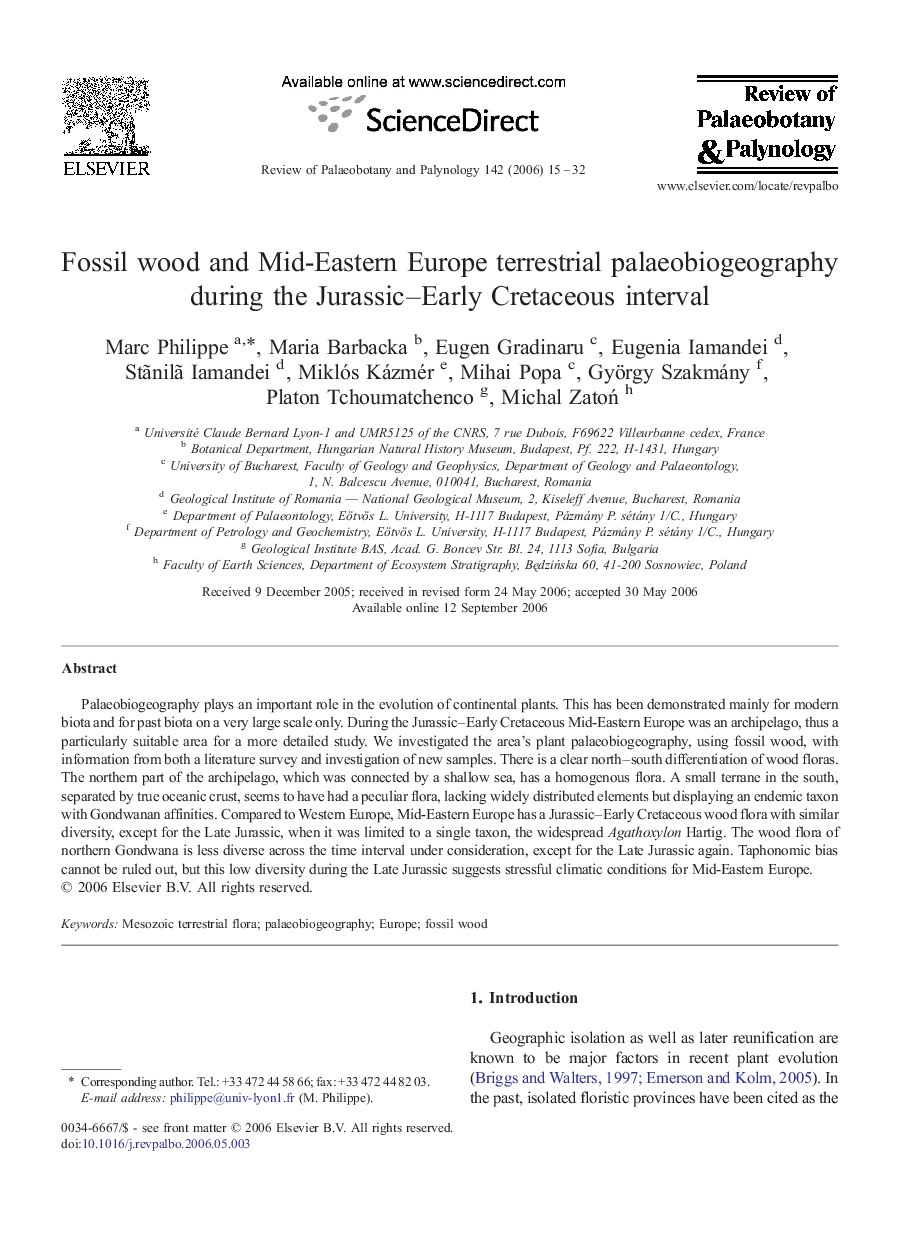| Article ID | Journal | Published Year | Pages | File Type |
|---|---|---|---|---|
| 4751210 | Review of Palaeobotany and Palynology | 2006 | 18 Pages |
Abstract
Palaeobiogeography plays an important role in the evolution of continental plants. This has been demonstrated mainly for modern biota and for past biota on a very large scale only. During the Jurassic-Early Cretaceous Mid-Eastern Europe was an archipelago, thus a particularly suitable area for a more detailed study. We investigated the area's plant palaeobiogeography, using fossil wood, with information from both a literature survey and investigation of new samples. There is a clear north-south differentiation of wood floras. The northern part of the archipelago, which was connected by a shallow sea, has a homogenous flora. A small terrane in the south, separated by true oceanic crust, seems to have had a peculiar flora, lacking widely distributed elements but displaying an endemic taxon with Gondwanan affinities. Compared to Western Europe, Mid-Eastern Europe has a Jurassic-Early Cretaceous wood flora with similar diversity, except for the Late Jurassic, when it was limited to a single taxon, the widespread Agathoxylon Hartig. The wood flora of northern Gondwana is less diverse across the time interval under consideration, except for the Late Jurassic again. Taphonomic bias cannot be ruled out, but this low diversity during the Late Jurassic suggests stressful climatic conditions for Mid-Eastern Europe.
Keywords
Related Topics
Physical Sciences and Engineering
Earth and Planetary Sciences
Palaeontology
Authors
Marc Philippe, Maria Barbacka, Eugen Gradinaru, Eugenia Iamandei, Stãnilã Iamandei, Miklós Kázmér, Mihai Popa, György Szakmány, Platon Tchoumatchenco, Michal ZatoÅ,
